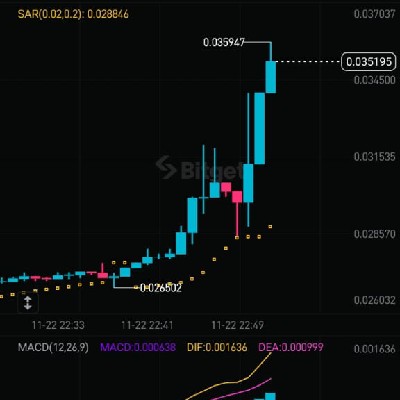
Precio de Shiba Inu TREATTREAT
EUR
No listado
€0.0006936EUR
-19.32%1D
El precio de Shiba Inu TREAT (TREAT) en Euro es €0.0006936 EUR.
Los datos proceden de proveedores externos. Esta página y la información proporcionada no respaldan ninguna criptomoneda específica. ¿Quieres tradear monedas listadas? Haz clic aquí
RegistrarseShiba Inu TREAT price EUR live chart (TREAT/EUR)
Última actualización el 2025-12-15 23:21:02(UTC+0)
TREAT/EUR price calculator
TREAT
EUR
1 TREAT = 0.0006936 EUR. El precio actual de convertir 1 Shiba Inu TREAT (TREAT) a EUR es 0.0006936. Esta tasa es solo de referencia.
Bitget ofrece las comisiones por transacción más bajas entre las principales plataformas de trading. Cuanto más alto sea tu nivel VIP, más favorables serán las comisiones.
Precio en tiempo real de Shiba Inu TREAT en EUR
The live Shiba Inu TREAT price today is €0.0006936 EUR, with a current market cap of €0.00. The Shiba Inu TREAT price is down by 19.32% in the last 24 hours, and the 24-hour trading volume is €887,486.79. The TREAT/EUR (Shiba Inu TREAT to EUR) conversion rate is updated in real time.
¿Cuánto es 1 Shiba Inu TREAT en Euro?
A partir de ahora, el precio de Shiba Inu TREAT (TREAT) en Euro es de €0.0006936 EUR. Puedes comprar 1 TREAT por €0.0006936 o 14,418 TREAT por 10 € ahora. En las últimas 24 horas, el precio más alto de TREAT en EUR fue de €0.0008759 EUR y el precio más bajo de TREAT en EUR fue de €0.0006757 EUR.
¿Crees que el precio de Shiba Inu TREAT subirá o bajará hoy?
Total de votos:
Subida
0
Bajada
0
Los datos de votación se actualizan cada 24 horas. Reflejan las predicciones de la comunidad sobre la tendencia del precio de Shiba Inu TREAT y no deben considerarse un consejo de inversión.
Información del mercado de Shiba Inu TREAT
Rendimiento del precio (24h)
24h
Mínimo en 24h: €0Máximo en 24h: €0
Máximo histórico (ATH):
€0.01681
Cambio en el precio (24h):
-19.32%
Cambio en el precio (7d):
+44.86%
Cambio en el precio (1A):
-66.10%
Clasificación del mercado:
#3693
Capitalización de mercado:
--
Capitalización de mercado totalmente diluida:
--
Volumen (24h):
€887,486.79
Suministro circulante:
-- TREAT
Suministro máx.:
--
Historial del precio de Shiba Inu TREAT (EUR)
El precio de Shiba Inu TREAT fluctuó un -66.10% en el último año. El precio más alto de en EUR en el último año fue de €0.01681 y el precio más bajo de en EUR en el último año fue de €0.0004348.
FechaCambio en el precio (%) Precio más bajo
Precio más bajo Precio más alto
Precio más alto 
 Precio más bajo
Precio más bajo Precio más alto
Precio más alto 
24h-19.32%€0.0006757€0.0008759
7d+44.86%€0.0004751€0.001248
30d+15.83%€0.0004348€0.001248
90d-39.52%€0.0004348€0.001322
1y-66.10%€0.0004348€0.01681
Histórico-92.40%€0.0004348(2025-12-02, 14 día(s) atrás)€0.01681(2025-01-25, 325 día(s) atrás)
¿Cuál es el precio más alto de Shiba Inu TREAT?
El máximo histórico (ATH) de TREAT en EUR fue €0.01681, el 2025-01-25. En comparación con el ATH de Shiba Inu TREAT, el precio actual de Shiba Inu TREAT es menor en un 95.87%.
¿Cuál es el precio más bajo de Shiba Inu TREAT?
El mínimo histórico (ATL) de TREAT en EUR fue €0.0004348, el 2025-12-02. En comparación con el ATL de Shiba Inu TREAT, el precio actual de Shiba Inu TREAT es mayor en un 59.51%.
Predicción de precios de Shiba Inu TREAT
¿Cuándo es un buen momento para comprar TREAT? ¿Debo comprar o vender TREAT ahora?
A la hora de decidir si comprar o vender TREAT, primero debes tener en cuenta tu propia estrategia de trading. La actividad de trading de los traders a largo plazo y los traders a corto plazo también será diferente. El Análisis técnico de TREAT de Bitget puede proporcionarte una referencia para hacer trading.
Según el Análisis técnico de TREAT en 4h, la señal de trading es Neutral.
Según el Análisis técnico de TREAT en 1D, la señal de trading es Comprar.
Según el Análisis técnico de TREAT en 1S, la señal de trading es Vender.
¿Cuál será el precio de TREAT en 2026?
En 2026, en función de una predicción de la tasa crecimiento anual de +5%, se espera que el precio de Shiba Inu TREAT (TREAT) alcance €0.0008816; de acuerdo con el precio previsto para este año, el retorno de la inversión acumulado por invertir y mantener Shiba Inu TREAT hasta finales de 2026 alcanzará +5%. Para obtener más información, consulta: Shiba Inu TREAT Predicciones de precios para 2025, 2026, 2030–2050.¿Cuál será el precio de TREAT en 2030?
En 2030, en función de una predicción de tasa de crecimiento anual de +5%, se espera que el precio de Shiba Inu TREAT (TREAT) alcance €0.001072; de acuerdo con el precio previsto para este año, el retorno de la inversión acumulado por invertir y mantener Shiba Inu TREAT hasta finales de 2030 alcanzará 27.63%. Para obtener más información, consulta: Shiba Inu TREAT Predicciones de precios para 2025, 2026, 2030–2050.
Promociones populares
Precios mundiales de Shiba Inu TREAT
How much is Shiba Inu TREAT worth right now in other currencies? Last updated: 2025-12-15 23:21:02(UTC+0)
TREAT a ARS
Argentine Peso
ARS$1.17TREAT a CNYChinese Yuan
¥0.01TREAT a RUBRussian Ruble
₽0.06TREAT a USDUnited States Dollar
$0TREAT a EUREuro
€0TREAT a CADCanadian Dollar
C$0TREAT a PKRPakistani Rupee
₨0.23TREAT a SARSaudi Riyal
ر.س0TREAT a INRIndian Rupee
₹0.07TREAT a JPYJapanese Yen
¥0.13TREAT a GBPBritish Pound Sterling
£0TREAT a BRLBrazilian Real
R$0Preguntas frecuentes
¿Cuál es el precio actual de Shiba Inu TREAT?
El precio en tiempo real de Shiba Inu TREAT es €0 por (TREAT/EUR) con una capitalización de mercado actual de €0 EUR. El valor de Shiba Inu TREAT sufre fluctuaciones frecuentes debido a la actividad continua 24/7 en el mercado cripto. El precio actual de Shiba Inu TREAT en tiempo real y sus datos históricos están disponibles en Bitget.
¿Cuál es el volumen de trading de 24 horas de Shiba Inu TREAT?
En las últimas 24 horas, el volumen de trading de Shiba Inu TREAT es de €887,486.79.
¿Cuál es el máximo histórico de Shiba Inu TREAT?
El máximo histórico de Shiba Inu TREAT es €0.01681. Este máximo histórico es el precio más alto de Shiba Inu TREAT desde su lanzamiento.
¿Puedo comprar Shiba Inu TREAT en Bitget?
Sí, Shiba Inu TREAT está disponible actualmente en el exchange centralizado de Bitget. Para obtener instrucciones más detalladas, consulta nuestra útil guía Cómo comprar shiba-inu-treat .
¿Puedo obtener un ingreso estable invirtiendo en Shiba Inu TREAT?
Desde luego, Bitget ofrece un plataforma de trading estratégico, con bots de trading inteligentes para automatizar tus trades y obtener ganancias.
¿Dónde puedo comprar Shiba Inu TREAT con la comisión más baja?
Nos complace anunciar que plataforma de trading estratégico ahora está disponible en el exchange de Bitget. Bitget ofrece comisiones de trading y profundidad líderes en la industria para garantizar inversiones rentables para los traders.
Precios de criptomonedas relacionadas
Precio de Smooth Love Potion (EUR)Precio de Terra (EUR)Precio de Shiba Inu (EUR)Precio de Dogecoin (EUR)Precio de Pepe (EUR)Precio de Cardano (EUR)Precio de Bonk (EUR)Precio de Toncoin (EUR)Precio de Pi (EUR)Precio de Fartcoin (EUR)Precio de Bitcoin (EUR)Precio de Litecoin (EUR)Precio de WINkLink (EUR)Precio de Solana (EUR)Precio de Stellar (EUR)Precio de XRP (EUR)Precio de OFFICIAL TRUMP (EUR)Precio de Ethereum (EUR)Precio de Worldcoin (EUR)Precio de dogwifhat (EUR)
¿Dónde puedo comprar cripto?
Sección de video: verificación rápida, trading rápido

Cómo completar la verificación de identidad en Bitget y protegerte del fraude
1. Inicia sesión en tu cuenta de Bitget.
2. Si eres nuevo en Bitget, mira nuestro tutorial sobre cómo crear una cuenta.
3. Pasa el cursor por encima del ícono de tu perfil, haz clic en "No verificado" y haz clic en "Verificar".
4. Elige tu país o región emisora y el tipo de ID, y sigue las instrucciones.
5. Selecciona "Verificación por teléfono" o "PC" según tus preferencias.
6. Ingresa tus datos, envía una copia de tu ID y tómate una selfie.
7. Envía tu solicitud, ¡y listo! Habrás completado la verificación de identidad.
Compra Shiba Inu TREAT por 1 EUR
¡Un paquete de bienvenida con un valor de 6,200 USDT para los nuevos usuarios de Bitget!
Compra Shiba Inu TREAT ahora
Las inversiones en criptomoneda, lo que incluye la compra de Shiba Inu TREAT en línea a través de Bitget, están sujetas al riesgo de mercado. Bitget te ofrece formas fáciles y convenientes de comprar Shiba Inu TREAT, y hacemos todo lo posible por informar exhaustivamente a nuestros usuarios sobre cada criptomoneda que ofrecemos en el exchange. No obstante, no somos responsables de los resultados que puedan surgir de tu compra de Shiba Inu TREAT. Ni esta página ni ninguna parte de la información que incluye deben considerarse respaldos de ninguna criptomoneda en particular.
TREAT/EUR price calculator
TREAT
EUR
1 TREAT = 0.0006936 EUR. El precio actual de convertir 1 Shiba Inu TREAT (TREAT) a EUR es 0.0006936. Esta tasa es solo de referencia.
Bitget ofrece las comisiones por transacción más bajas entre las principales plataformas de trading. Cuanto más alto sea tu nivel VIP, más favorables serán las comisiones.
Recursos de TREAT
Clasificación de Shiba Inu TREAT
4.6
Contratos:
0xa02c...db599f4(Ethereum)
Bitget Insights

Kenniy
2d
$TREAT is showing solid bullish momentum after a clean breakout, supported by strong volume. Price is up over 100% in the last 24 hours and remains well above its short-, mid-, and long-term moving averages, keeping the uptrend firmly intact. At the same time, Bitget is standing out as the only major exchange running a US Launchpool, where staking BGB lets users earn from a 17.5M $US reward pool a straightforward way to generate extra US while holding BGB, especially with few incentives available elsewhere right now.
$JUV
BGB-1.52%
TREAT-15.28%

chanaka🇱🇰
2d
treat
$TREAT now
TREAT-15.28%

Ahamedalomshahin
2d
$SNEK buy now 10x,🚀
Sell $TREAT 👉 Buy $SNEK 10X PUMP Loading 🚀🚀
🚨 Tp 🎯 0.0015000$+
TREAT-15.28%
SNEK-9.88%

Ahamedalomshahin
2d
$SNEK buy now 10x🚀
Sell $TREAT 👉 Buy $SNEK 10X PUMP Loading 🚀🚀
🚨 Tp 🎯 0.0015000$+
TREAT-15.28%
SNEK-9.88%

MuhammadUzair-007
2d
$TREAT up to .04
TREAT-15.28%
Precios de las monedas recién listadas en Bitget
Conversor y calculadora de Metaverse ALL BEST ICO {1}Conversor y calculadora de CryptoGuards {1}Conversor y calculadora de Graviton Zero {1}Conversor y calculadora de HeroPark {1}Conversor y calculadora de METAROBOX {1}Conversor y calculadora de Generous Robots DAO {1}Conversor y calculadora de Marvelous NFTs (Bad Days) {1}Conversor y calculadora de XGLI DAO Protocol {1}Conversor y calculadora de GamiFi.GG {1}Conversor y calculadora de Endless Battlefield {1}








